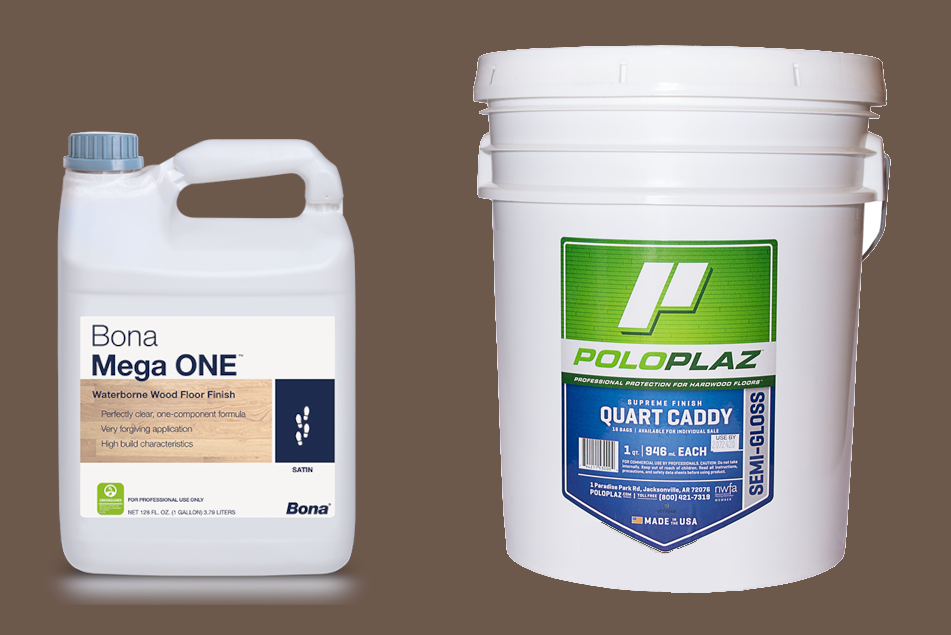Introduction
Selecting the right flooring finish significantly affects both the appearance and performance of hardwood floors. Finishes protect wood from daily wear, enhance durability, and influence indoor air quality. Two primary categories: oil based and water based finishes each offer unique benefits and drawbacks, affecting homeowners' choices based on preferences, lifestyle, and environmental considerations.
In this article we cover:
- Flooring Finishes
- Understanding Oil Based Flooring Finishes
- Understanding Water Based Flooring Finishes
- Comparative Analysis: Oil Based vs. Water Based Finishes
- Current Trends and Preferences
- Coats and Application
- Conclusion
1. Flooring Finishes
Historically, wood floors were protected using natural drying oils such as linseed and tung oils. These oils were often combined with natural resins to form early varnishes. Synthetic, oil based polyurethane emerged prominently in the mid 20th century around the 1940s, quickly becoming the standard choice due to its durability and ease of use. In contrast, water based finishes began gaining popularity from the 1980s onwards, driven by environmental concerns and regulations restricting volatile organic compounds (VOCs).
2. Understanding Oil Based Flooring Finishes
Definition and Application: Oil based finishes consist of polyurethane resin dissolved in petroleum based solvents. Usually, two coats provide adequate protection, with drying times between coats typically ranging from 8 to 12 hours, and a full cure requiring up to seven days.
Benefits:
- Rich appearance and deep amber coloration, enhancing wood grain and warmth.
- High durability, providing a thicker protective layer suitable for high traffic areas.
Drawbacks:
- Tendency to yellow over time, potentially altering the appearance of lighter woods.
- High VOC content and strong odors necessitating proper ventilation.
- Slow drying time and requirement for solvent based cleanup.
3. Understanding Water Based Flooring Finishes
Definition and Application: Water based finishes utilize water as the solvent combined with acrylic or polyurethane solids. They dry quickly, typically within 2 to 4 hours per coat, allowing multiple coats to be applied in a single day, with a full cure achieved in about seven days.
Benefits:
- Clear finish without yellowing, preserving the natural wood tone.
- Low VOC emissions, minimal odor, and environmentally friendly.
- Easy cleanup with soap and water.
Drawbacks:
- Requires multiple coats (usually 3 to 5) for effective protection.
- Application demands careful handling to prevent visible lap marks.
- Thinner protective film that can reveal scratches more easily.
4. Comparative Analysis: Oil Based vs. Water Based Finishes
Durability and Longevity: Oil based finishes typically offer a thicker, tougher protective layer with fewer coats. However, modern water based finishes have significantly improved, offering comparable durability when adequately applied.
Appearance and Color Retention: Oil based finishes impart a richer, amber hue, deepening over time, ideal for darker woods. Water based finishes preserve natural wood tones and are suitable for lighter woods or contemporary color schemes.
Application and Drying Time: Water based finishes dry much faster, allowing quicker reapplication and project completion. Oil based finishes require longer drying and curing, extending project timelines significantly.
Maintenance and Refinishing: Both finishes are maintainable; however, oil based finishes may require less frequent refinishing due to thicker protective layers. Water based finishes offer easier spot refinishing but may need periodic refreshing more often in high traffic areas.
Environmental and Health Considerations: Water based finishes have a clear advantage with lower VOC emissions, significantly improving indoor air quality during and immediately after application. Oil based finishes require extensive ventilation during and shortly after application due to higher initial emissions but pose minimal risk post curing.
Price and Budget Considerations: Water based finishes generally cost more than oil based options. The product itself is more expensive per gallon and requires at least one additional coat to achieve similar durability. Although faster drying time may reduce labor costs slightly, the overall material and application needs result in a higher total expense. On average, choosing water based finishes can increase the final project price between 15 to 25 percent. For homeowners or businesses with strict budget constraints, oil based finishes may offer better short-term value, especially in projects where drying time is less critical.
5. Current Trends and Preferences
Environmental regulations, particularly those enacted in California, have encouraged the shift toward water based finishes. Urban markets strongly favor water based finishes due to faster drying times, lower odors, and better indoor air quality. However, rural markets often maintain preferences for traditional oil based finishes due to familiarity and perceived superior durability. Matte finishes, trending in contemporary and Scandinavian interiors, are frequently achieved with water based products due to their clear, neutral appearance.
6. Coats and Application
Oil based finishes generally require two coats, with optional buffing between coats. Water based finishes typically require three or more coats, and careful buffing between coats improves finish smoothness and adhesion.
7. Conclusion
Selecting the right flooring finish involves balancing aesthetics, performance, maintenance requirements, environmental impact, and budget considerations. Understanding these differences enables informed choices for beautiful, lasting floors.
